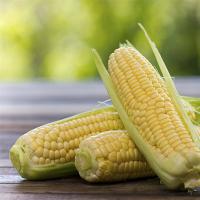How to attract beneficial insects to the site? Home for beneficial insects How to make such a house
A hotel for garden insects a few years ago could hardly be called a popular landscape object. Performing both practical and decorative functions, such an artificially created refuge for beneficial insects was not at all familiar to many gardeners. Thanks to the efforts of designers, who drew attention to the possibility of developing art objects that serve as abodes for the smallest inhabitants of the garden, insect houses have become fashionable. But despite all their unique artistic merit, the main task is to increase the number of useful fauna in your garden and preserve valuable insects in general.
augerbWhy do we need houses for beneficial insects?
The garden is filled with life by its invisible and largely underestimated inhabitants - birds, insects, various animals. If everyone takes care of attracting birds to the garden, they are fed and provide additional food in the cold season, then insects are often forgotten. But these humble helpful helpers solve many problems in the garden. They not only pollinate plants, but they also participate in the invisible fight against pests and even diseases. And beneficial insects should be attracted to the garden no less than butterflies or animals, even if you do not even think about collecting your own honey.
In Europe, and all over the world, they have long been loudly shouting about the problem of preserving bees, whose populations have dramatically decreased, and parks, gardens, zoos are invariably equipped with houses for insects. In our country, almost no one has even heard of the ecological catastrophe threatened by a reduction in the number of beneficial insects. Meanwhile, everyone can and should fight against trouble. And there is only one way for this - to create special shelters - houses, which are called hotels for beneficial insects or simply hotels for beetles.
 Yersinia
Yersinia What is a bug hotel?
A house for beneficial insects, a hotel for beetles, or an insect house is any special building, a small accumulation of materials or a house in which beneficial insects, honey plants and other enemies of garden pests - lacewings, can settle, ladybugs, riders, hoverflies, ground beetles, etc. This is a complex solution to the problem of attracting beneficial insects to your site and preserving their population in nature.
Universal pretty houses, which are actually a warehouse of materials where beneficial insects can equip their home, are counted among the objects of small architecture, along with garden sculpture or gazebos. They can really turn into modern, stylish and very original decoration garden. Each such house for insects is unique in its own way and will become a bright individual touch in the design of the garden as a whole.
 shastan
shastan Such hotels are traditionally given decorative form houses like birdhouses, but larger in size, filling the internal space with floors of cells in which insects can settle. But it is not necessary to build a house. You can use old boxes, unnecessary old containers for plants, leftover boards, pallets and just bricks with holes-holes.
Materials can be folded into a pyramid, laid out in the form of a wall, built original structures or made a full frame of a house or cottage. The main thing is that the hotel has a roof and walls that will serve reliable protection from wind and precipitation. It all depends on your imagination and time. And, of course, the desire to create not just a functional, but also an attractive object that will become a real decoration of the site.
In fact, even modest bundles of brushwood laid out on purpose can be called a hotel for insects. But usually in designs they go much further, realizing their fantasies and tastes. Most often, hotels are made of wood, but any non-synthetic materials will do (and you need to choose non-coniferous wood).
You can make a full-fledged house with rooms, or you can simply knock down a triangle from the boards, dividing the inner space into sections and sections with partitions. Located in each area inside the hotel different materials, in which insects usually settle, from porous stone and brick to brushwood and bark, choosing a filler with holes of different sizes, you will create all the conditions so that over time bees and other beneficial insects have mastered such a house and turn it into a real shelter under the roof ...
To protect from birds, sometimes the house is covered with a net on top.
 Janet roberts
Janet roberts
How to make a house for beneficial insects?
The most important thing in setting up a hotel for beetles is to collect materials in which beneficial insects can equip their shelter. You can also use the same type of filler. But they will only be tempted by a certain type of insect, and not different inhabitants of the garden. So if you want to build a real hotel, then you should make sure that a variety of materials with holes are present under one roof and in one structure. various shapes and magnitudes. You can use for garden helpers:
- drilled pieces of wood with vertical or horizontal strokes;
- small remnants of boards and logs;
- cones;
- straw;
- large sawdust;
- bark;
- a variety of plant debris, dry inflorescences or vines;
- stones and pebbles;
- spikelets;
- hollow stems (cereals, bamboo, reeds, sunflowers, corn):
- clay bricks with holes, etc.
 Clive barker
Clive barker The materials are applied tightly or smeared with clay so that it does not crumble over time. For bees, the main thing is holes in stones and hollow drilled holes or empty stems so that they can safely hide, settle, lay eggs and, easily closing the cache, expect offspring. Absolutely harmless and very useful osmium bees are attracted to the site by thatched roofs, marsh reeds and other tubular hollow stems in which they create nests for themselves. But they will settle in long drilled holes on a piece of wood. For ladybugs, it is better to spray the materials with sugar syrup. And lacewings love the cones and dry stems of a variety of vines.
The hotel for insects is always placed in a place protected from precipitation and always on a warm sunny area. In the shade, beneficial insects will not be tempted by your shelter. In the warm season, insect houses are more art objects than truly functional bait for beneficial insects. They perform their real functions, first of all, in the cold season. In regions with mild winters, they can be placed at any height. But where winters are harsh, garden hotels for beneficial insects are placed so that in winter they can be covered with snow - at a maximum at a meter height or on the ground. Or provide the opportunity to rent a hotel and lower it to the ground.
Build an insect house with materials you can find to balance your wide variety of plants and increase biodiversity in your area.
This simple construction will help attract beneficial insects to your site, which will provide invaluable help in pest control.
1
- Start by collecting natural materials to build an insect shelter: Round wood, brick, straw, tubular stems. Choose from available local materials that offer more or less large openings to suit different insect preferences.
2 - Make wooden framestrong enough to support significant weight. Use resistant woods: oak, larch, chestnut ... Estimate the size of your house in the amount of materials you have. Place the heaviest materials on the bottom.
3 - Provide a waterproof cover structure (slate, for example).
4 - Set the frame in its permanent place before filling (due to weight if the house is large). Raise it 20 cm above the ground to keep it out of moisture (and to prevent your dog from setting up his rookery there). To protect the house from strong winds, drive the stakes around the perimeter and secure the house on them, for example.
5
- cut the material to the desired length and fill each opening in the structure.
Advice: If you can set up the cabin out of the wind and sun, you can leave it open on both sides. Otherwise, it is better to close the back side so as not to disturb the insects too much with air currents.
What materials, for what insects?
1. straw or wood: this material will attract lacewings, whose larvae feed on many pests: aphids, powdery mildew, whitefly, mite eggs.
2. bamboo sticks: provide shelter for solitary bees, which pollinate the first flowers of fruit trees, starting in March
3.
inverted pots filled with hay: it attracts earwigs that like pests such as aphids
4.
boards hidden behind these metal plates: attract insects involved in the decomposition of dead wood
5.
Drilled logs: These will become a popular shelter for many highly beneficial pollinators such as bees and solitary wasps, whose larvae feed on aphids.
6.
tubular stems: such as blackthorn, elderberry, provide housing for hoverflies and other hymenoptera.
7. Brick: Prized by solitary bees.
8.
Small cells closed from each other: they attract ladybugs, which arrive to spend the winter. Their larvae destroy many aphids.
Place this cabin close to your garden to ensure that your herbs, vegetables, and flowers are pollinated and help you contribute to the health of your local ecosystem. Just remember that you must move slowly and not threateningly near the house, and do not disturb the alert residents.
Build an insect house with materials at hand to help balance your wide variety of plants and increase your area.
This simple design will help attract beneficial insects to your site, which will provide invaluable aid in pest control.
Building a house for insects

1 - Start by collecting natural materials to build an insect shelter: Round wood, brick, straw, tubular stems. Choose from available local materials that offer more or less large openings to suit different insect preferences.
2 - Make a wooden frame strong enough to support significant weight. Use resistant woods: oak, larch, chestnut ... Estimate the size of your house in the amount of materials you have. Place the heaviest materials on the bottom.
3 - Provide a waterproof cover structure (slate, for example).
4 - Set the frame in its permanent place before filling (due to weight if the house is large). Raise it 20 cm above the ground to keep it out of moisture (and to prevent your dog from setting up his rookery there). To protect the house from strong winds, drive in stakes around the perimeter and reinforce the house on them, for example.
5 - Cut the material to the desired length and fill each opening in the structure.

Tip: If you can set up the house out of the wind and sun, you can leave it open on both sides. Otherwise, it is better to close the back side so as not to disturb the insects too much with air currents.
What materials, for what insects?

1. straw or wood: this material will attract lacewings, whose larvae feed on many pests: aphids, powdery mildew, whitefly, mite eggs.
2.bamboo sticks: provide shelter for solitary bees, which pollinate the first flowers of fruit trees, starting in March
3 inverted pots filled with hay: it attracts earwigs that like pests like aphids

4 planks hidden behind these metal plates: attract insects that decompose dead wood
5 drilled logs: these will become a popular shelter for many very beneficial pollinators such as bees and solitary wasps whose larvae feed on aphids.

6. tubular stems: such as blackthorn, elderberry, provide shelter for hoverflies and other hymenoptera. 7. Brick: prized by solitary bees. 8. Small cells closed from each other: they attract ladybugs that come to spend the winter. Their larvae destroy many aphids.

Place this cabin close to your garden to ensure that your herbs, vegetables, and flowers are pollinated and help you contribute to the health of your local ecosystem. Just remember that you must move slowly and not threateningly near the house, and do not disturb the alert residents.
If you liked this material, then we offer you a selection of the most best materials of our site in the opinion of our readers. A selection - TOP about existing eco-settlements, Ancestral estates, their history of creation and everything about eco-houses you can find where it is most convenient for you
How to make an insect house in 5 steps
Build an insect house with materials you can find to balance your wide variety of plants and increase biodiversity in your area.
This simple design will help attract beneficial insects to your site, which will provide invaluable aid in pest control.
Construction of a house for insects (photo 1)
1 - Start by collecting natural materials to build an insect shelter: Round wood, brick, straw, tubular stems. Choose from available local materials that offer more or less large openings to suit different insect preferences.
2 - Make a wooden frame strong enough to support significant weight. Use resistant woods: oak, larch, chestnut ... Estimate the size of your house in the amount of materials you have. Place the heaviest materials on the bottom. (photo 2)
3 - Provide a waterproof cover structure (slate, for example).
4 - Set the frame in its permanent place before filling (due to weight if the house is large). Raise it 20 cm above the ground to keep it out of moisture (and to prevent your dog from setting up his rookery there). To protect the house from strong winds, drive in stakes around the perimeter and reinforce the house on them, for example.
5 - cut the material to the desired length and fill each opening in the structure (photo 3)
Tip: If you can set up the house out of the wind and sun, you can leave it open on both sides. Otherwise, it is better to close the back side so as not to disturb the insects too much with air currents.
What materials, for what insects? (photo 4)
1. straw or wood: this material will attract lacewings, whose larvae feed on many pests: aphids, powdery mildew, whitefly, mite eggs.
2.bamboo sticks: provide shelter for solitary bees, which pollinate the first flowers of fruit trees, starting in March
3 inverted pots filled with hay: it attracts earwigs that love pests such as aphids (photo 5)
4 planks hidden behind these metal plates: attract insects that decompose dead wood
5 drilled logs: these will become a popular shelter for many very beneficial pollinators such as bees and solitary wasps whose larvae feed on aphids. (photo 6)
6. tubular stems: such as blackthorn, elderberry, provide shelter for hoverflies and other hymenoptera.
7. Brick: prized by solitary bees.
8. Small cells closed from each other: they attract ladybugs that come to spend the winter. Their larvae destroy many aphids. (photo 7)
Place this cabin close to your garden to ensure that your herbs, vegetables, and flowers are pollinated and help you contribute to the health of your local ecosystem. Just remember that you must move slowly and not threateningly near the house, and do not disturb the alert residents.
http://www.youtube.com/watch?v\u003d2EfPmbADIcM 





That's probably what you ask when you hear such a combination, and you will be even more surprised if you find out that "insect houses" and "hotels for insects" are not only fun for children, but adults do it too. Why are such houses needed on the site?
This "invention" is now especially popular among European gardeners: such "birdhouses", only not for birds, but for insects, are made as full-fledged art objects and decorate the garden by themselves. In addition, the insect “hotels” shown in these pictures are too high above the ground. In our climate, in order for insects to settle in rooms and overwinter with the onset of cold weather, it is necessary that it be covered under a layer of snow.
You probably know that in addition to being annoying, insects (not all, but there are many) help get rid of garden pests. If everything is clear with bees, wasps and bumblebees - who, if not them, is doing all this gigantic work of pollination of flowers? - then the six other workers and fighters of the garden look like this:

Such a neighborhood, as we see, will be very desirable - why not invite them to spend the winter safely, so that in the spring they rush with renewed vigor into battle with garden pests?

The basic principles of creating a house for insects are extremely simple - even easier than making a birdhouse.
1) you need to create protection from wind, moisture and, in fact, the cold - the recesses that you will drill in the wood, and the width of the dwelling itself should be deep enough so as not to freeze in winter;
2) when creating a house, you should not use coniferous wood and synthetic materials, as well as fiberboard, chipboard - materials obtained by pressing sawdust and glue;
3) if the house has “rooms” with filler, do not use foliage: mold and other harmful fungi can settle on it, which the hotel residents will spread throughout the site;
4) all the elements must be securely fixed: this way you will strengthen the structure and create additional protection from birds that will gladly feast on the inhabitants of the "nest".
As elements, branches, bricks with pores and voids, bark, straw or hay, moss, hollow tubes of dry plants, pebbles, ceramics, wood logs, branches and other similar things are suitable.
Can pests, in addition to beneficial insects, settle in the house? It is unlikely: how will they get along with their natural enemies?



